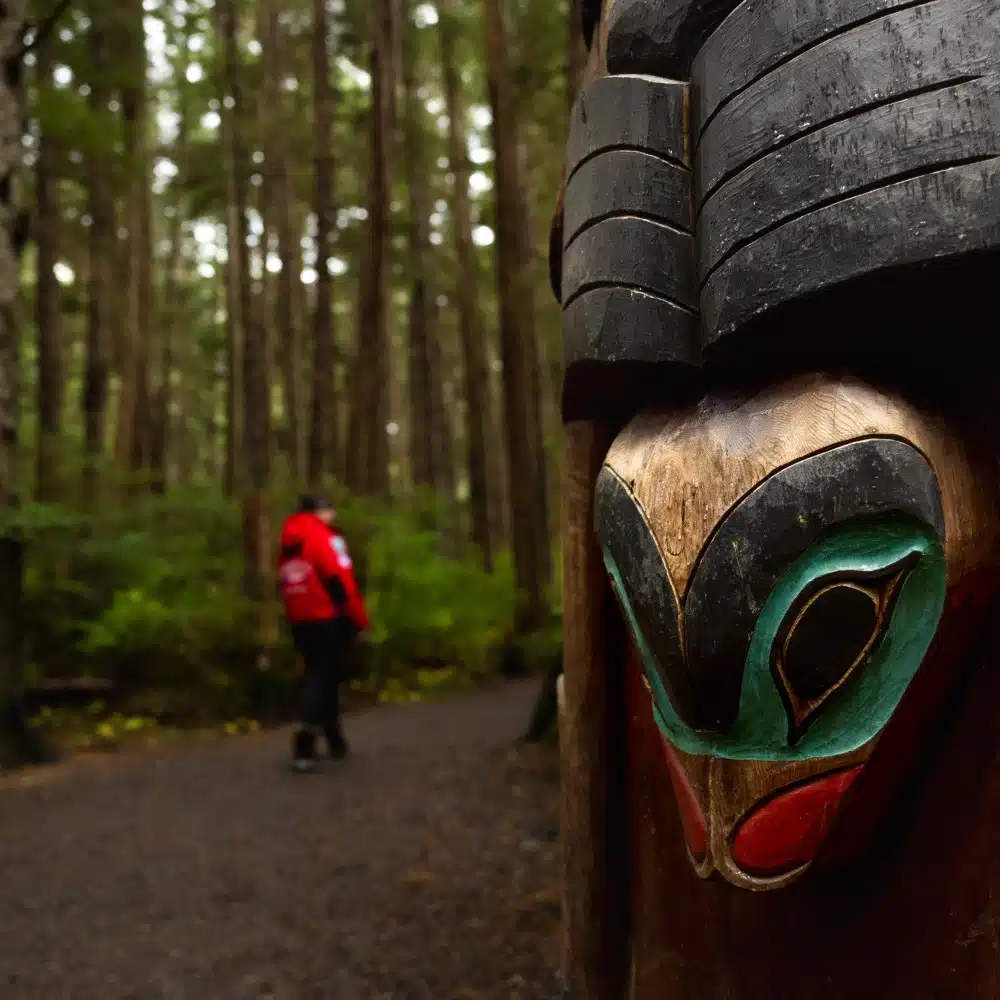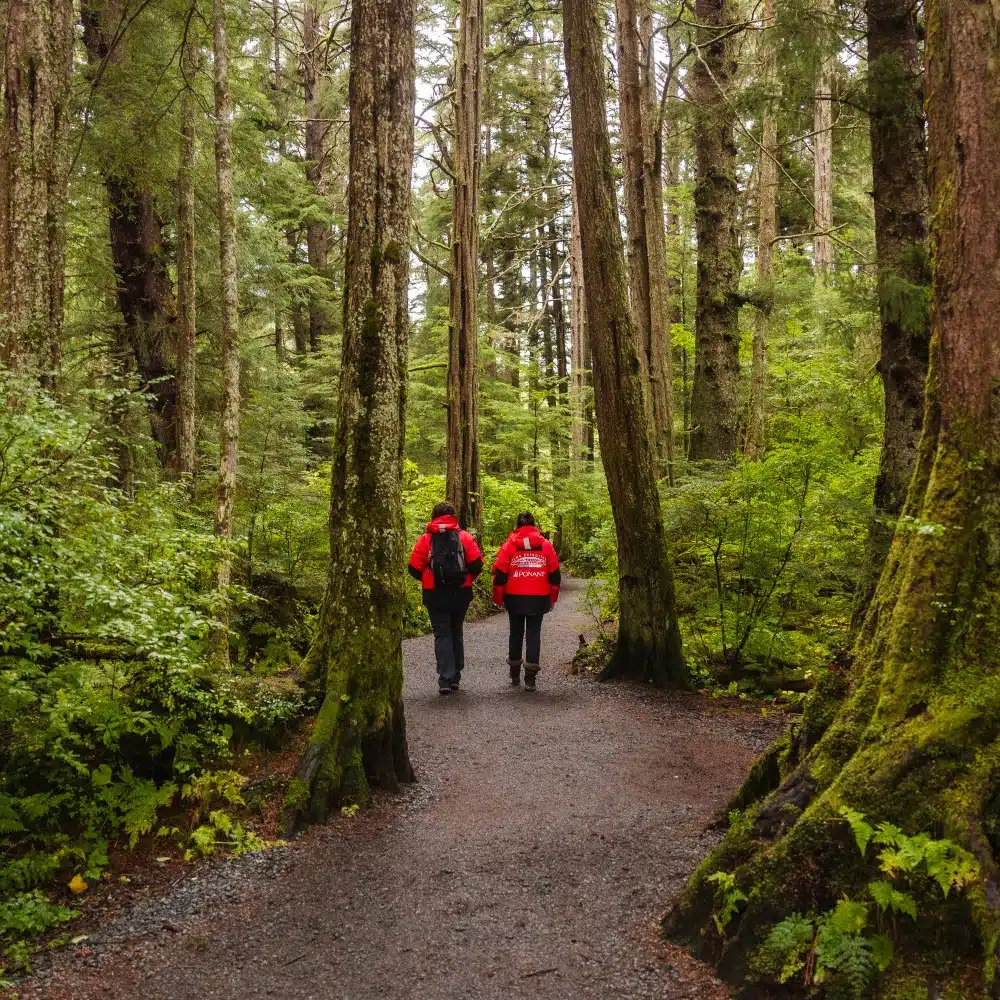The Tlingit people of coastal Alaska are closely associated with the sea. Even their name translates into “People of the Tides.” But their most enduring symbol – the totem pole – comes from the forests that hug the pristine shores they’ve called home for centuries. This legendary cultural symbol holds many meanings to the First Nations people. As you’ll discover during a PONANT luxury Alaska expedition.
The Tlingit aren’t alone in sculpting the colorfully expressive totem poles you’ll encounter during a PONANT Alaska expedition. The First Nations communities of the Haida and Tsimshian along the Southwest coast of Alaska, the Kwakwaka’wakw and Nuu-chah-nulth people of British Columbia, and the Coast Salish people of Washington State are also celebrated for the skill with which they transform trees into magnificent and towering works of art.
These are not mere decorative pillars. Totem poles tell a story, represent a myth, or commemorate a group or individual, and so hold great cultural significance to the First Nations people. Here, we present an overview of their origin, types, and meaning.

Carved from Trees, Born from Belief
We can’t know when the first totem poles were carved. Largely because the giant cedars and western red cedars typically used are prone to decay. Especially in the rainy climates of the Northwest Coast of North America. There is a written record that shorter decorative posts were once used to build dwellings in the 1700s. Whatever the case, carving totems in pre-industrial times would have been time-intensive and laborious. With little more than sharp rocks, shells, and beaver teeth available to cut into tree trunks.
By some accounts, the original totem poles embodied the First Nations belief in animism. Namely, that everything in nature has been imbued with a spirit. But this theory is not widely supported. It is more popularly believed that the animals carved into the totems may represent two things. First, a bird or other creature of nature might represent a family or a clan of people. Second, supernatural beings – such as the Thunderbird, a creature of great strength in First Nations mythologies – might signify the power of a leader.
Regardless, totem poles are heralded up and down the coast of the Pacific Northwest. For the stories they tell and the traditions they embody.

Countless Totem Poles, Countless Meanings
Though they encompass the shared heritage of many First Nations peoples, each totem pole carries a highly personal meaning – to an individual, to a family, or to a clan. Still, totem poles can be classified into several categories. Here are just a few:
- Crest poles are the most common and often the most decorative. Just 20 to 40 feet tall, they are typically erected outside the clan house of a village’s most important leaders. Their carvings depict the crest and lineage of the family that owns them and might be topped with a watchman or a particular animal or supernatural being who protects the family.
- As their name suggests, story poles tell a particular story or legend. Experiences of living people, ancestors, supernatural beings, and mythological characters might be depicted in their carvings.
- Mortuary poles are designed to hold the ashes or body of the deceased. These are among the tallest poles, soaring 50 to 70 feet. Two key elements might be carved out near the top of the pole – a family crest and a recessed hollow to hold a grave box.
- Similar in spirit to mortuary poles, memorial poles are usually erected a year after a village member’s death. If the deceased was a leader, the pole is placed in the village center and marked with the identity of a successor. Memorial poles might also commemorate a significant event in a family’s or village’s past.
- Welcome poles greet visitors to community beaches or parks. Most often, they depict human figures and can be quite large, up to 40 feet. Contrary to their name, they might also be strategically placed in order to scare away trespassers.
- Perhaps the most fascinating is the ridicule pole. Also called the shame pole, it is raised in a prominent location to embarrass a villager who has done someone wrong or who is carrying an unpaid debt – be it financial, social, or political.


Discover America’s Last Frontier
To admire the artistry and craftsmanship of the First Nations totem poles up close, join PONANT on an expedition in Alaska. Our expedition guides have lots more to tell you about these cultural treasures.







